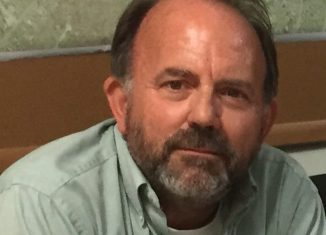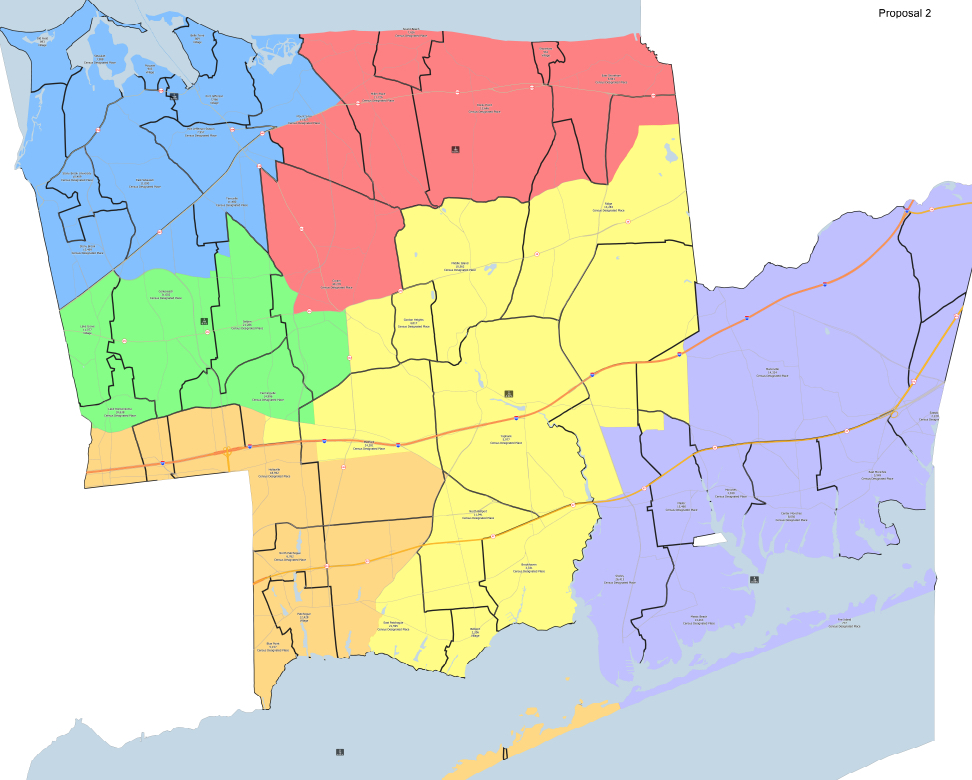One-on-one with George Hoffman
Brookhaven Redistricting Committee member says residents must stay engaged

The redistricting committee recently approved the creation of three new draft maps, one of which you voted ‘no.’ Could you briefly explain your ‘no’ vote?
Ali Nazir, the co-chair, requested taking one of the first maps — which created all this controversy — and refining it by putting Council Districts 1 and 2 together but leaving everything else as it is.
Ali’s resolution solves the issue of Mount Sinai and Terryville. Still, it keeps [Council District] 4 the way the mapmaker drew it. I voted ‘no.’ Rabia [Aziz] voted ‘no.’ Gail [Lynch-Bailey] had left because she had to go to a civic meeting by that time. The rest of the [members] voted ‘yes’ [for a 5-2 vote] and that’s very concerning.
What is your message to those who have successfully resisted the first two draft maps?
I congratulate the communities of Mount Sinai, Terryville and Port Jeff Station because they mobilized quickly to preserve their communities of interest. They wanted to stay with the original council district boundaries we have had for 20 years, so I would not minimize their involvement. And it was a very personal involvement: they were defending their communities and protecting their backyards. If they hadn’t come out in such strength, maybe the majority on that commission may not have put it back. But I think the bigger goal is still to crack CD4.
In your eyes, does the transfer of Ridge into Council District 4 constitute an act of partisan gerrymandering?
Yes, and I think it may even violate the [John Lewis] Voting Rights Act. It’s pretty clear that Ridge is a solid Republican-leaning area. To put it into a diverse community solely because it will affect the outcome of that district, I think, is certainly the definition of gerrymandering.

How can concerned residents help to deter an unfavorable redrawing of CD4?
To all the residents of Brookhaven, we should be concerned. They should care about their own community — it’s important to fight for your own community of interest — but help as much as you can to have a fair and balanced redistricting townwide because what’s going on is not fair and it’s not balanced. My recommendation would be that everyone has to stay engaged.
What changes are you looking for in the coming weeks?
I think all six districts have a right to stay close to what they are currently. I recognize that Council District 2 is down a couple of thousand in terms of population, so you need to balance that. Council District 6 had a lot of growth, so you do have to remove some of the people there. But there shouldn’t be mischief in doing that.
What is your reaction to the committee’s recent meeting with David Schaefer, the mapmaker?
Last night [Aug. 18], we met with the mapmaker for the first time in a month and a half. We should have met with him at the outset, or at least after the first six public hearings. Because so few people showed up at the initial hearings, he should have at least asked us what our vision or goals were for the first map. To do a map without even talking to us is like an interior decorator designing your house without consulting you.
I don’t think he’s politically motivated. I think he has good skills as a demographer and was pretty candid with us. But I do believe that he’s responding to some instructions. I think he’s data in/data out, and I don’t think you can do redistricting that way. Maybe he’s too much on the statistical side and not sufficiently understanding of communities.
Isn’t that the real purpose of redistricting? To balance out the populations but don’t destroy communities.
What is your understanding of the history of councilmanic districts in the Town of Brookhaven?
For years, the town used to elect its council people at large. There were always seven members — six board members and a supervisor — but they ran townwide. What happened was that they were not very responsive to local communities. You could vote against a community and still survive if you had the rest of the town, and it got very bad.
A civic network was formed called ABCO, the Affiliated Brookhaven Civic Organizations, and it became huge. They would do a meeting and have dozens of civic organizations throughout the township meet to talk about how unresponsive the town was to their needs. It culminated in a movement for a referendum for council districts to divide the Town Council into six districts based on regional community interests. It went to a vote. The community was very organized, and they prevailed.
Council District 4 was seen as the most diverse district in the town. People saw it as the district that probably would be most successful at electing a diverse candidate, and both parties understood that. That was 2002, so for 20 years now, we’ve lived under these districts, more or less.
I’m a bit taken aback by what’s happening in this redistricting. It’s pretty clear to me now that the goal is to change CD4 into a more favorable district, almost partisan gerrymandering to help the incumbent there [Councilman Michael Loguercio (R-Ridge)].
What are the risks of an overly analytical redistricting process that neglects the complex realities on the ground?
This is sort of a digression, but it has been over 75 years since splitting India into India and Pakistan. The map was done by a British guy who never went to India and just drew a straight line down the middle of the country following rivers, and over a million people died because the partition was done without any understanding of communities.
You can’t just do demographics without understanding the consequences of your mapmaking. I think [the mapmaker] has been much more on the statistical side, and I would like for the map to reflect a keener understanding of the communities of Brookhaven.






